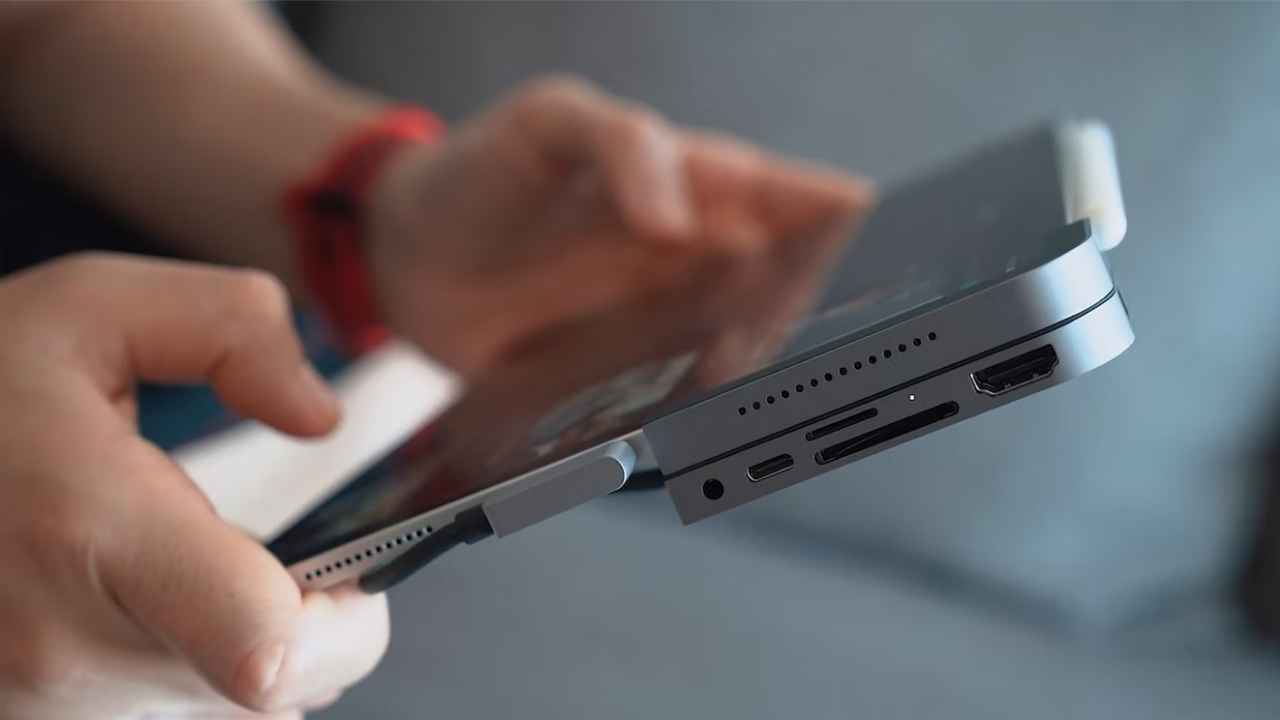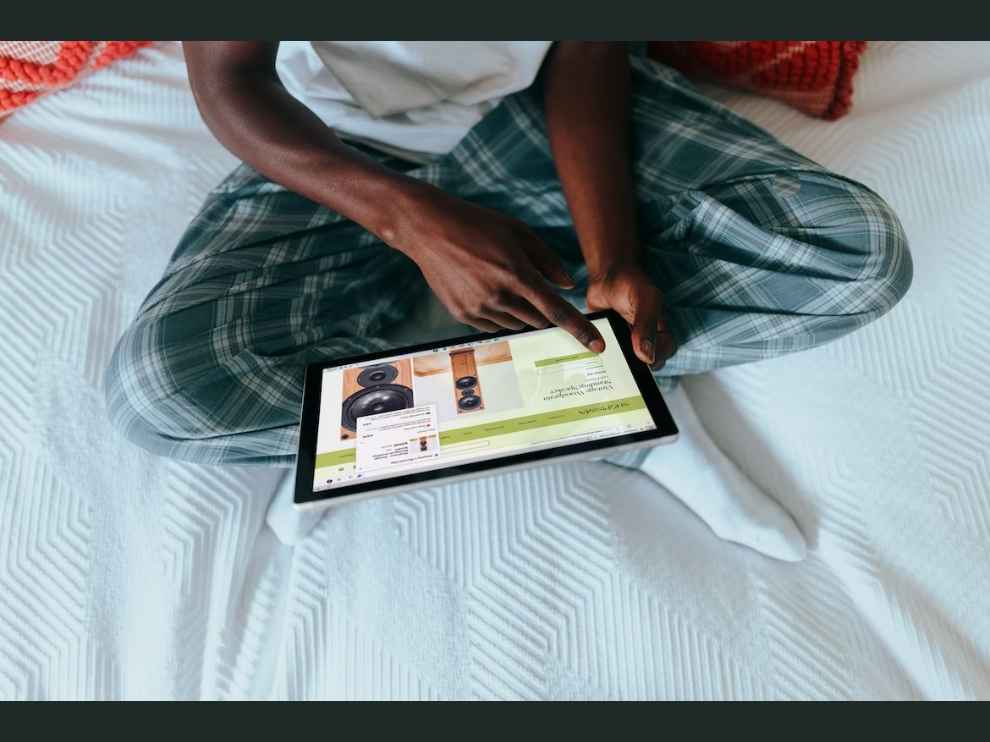Is the future made of screens that will touch us back?

Touch Labs studies touchscreen and other display technologies.
We will read about the possible future screen technologies.
The article also talks about the ecommerce window of these technologies.
One objective of M Manivannan, when he established in IIT Madras India’s first lab dedicated to the study of touch, was to fully appreciate what he believed to be the most important sense of all the fundamental senses. After sixteen years, his confident and forceful belief is still standing erect on the grounds of a solid argument, which he often repeats – vision and taste, smell and hearing are just restricted to the head, the touch is in the entire body.
“Since I am running a laboratory called Touch Labs, I say it is not just a claim, but I have a solid proof,” he continues on a subject that clearly fires him up. “Your vision will not work if touch is not working. Your hearing will not work if touch is not working. Your taste will not work. Even your smell will not.”
It is perhaps why he finds it so odd that the screens on which we are perpetually running our thumbs and fingers are not touching us back. Touch, which he believes is so fundamental to humans and their experience of the world, is near absent from our online lives in today's time. Mindlessly scrolling to the bottom of the internet, the most we feel is the touch of cold glass or the body of our phones.
Touchscreens in the market, for better or worse, are yet to go touchy-feely. Right now, they just sense the position of our fingers and move the cursor there. But Manivannan feels that such tactile deprivation on digital devices is unlike the real world and isn’t intuitive. “When you are interacting with mobile phones, when you are using computers, when you're in virtual reality, you want to feel as if you are in the real world. You want the touch feedback”, he remarks.
For some reason, techies all around the world are collectively convinced that people want the virtual world to ape the real one. In Manivannan’s vision, it will involve him greeting people over Zoom with a high-five, with the surface of the laptop supplanting the touch of human palm. Or shopping on e-commerce platforms after feeling the texture of the shirt and shoes on the laptop. Or the addictive smartphones supplying all sorts of synthetic touches to the fingers that can’t go an hour without tapping all over their surface.
The touchy-feely touchscreen
A professor of biomedical engineering, M Manivannan forayed into haptics during his stint as a scientist in Massachusetts Institute of Technology. Two years ago, he spearheaded a project with a pair of researchers at Touch Labs in IIT Madras that recently culminated in the buildout of a new kind of touchscreen, which mimics to a certain extent the texture of metals, how smooth or rough their surfaces feel. He is calling it iTad, short for Interactive Touch Active Display.
“It is like an iPad, right?”, he suggests, giggling, truly self-aware. “I wanted to convey that the iPad's time is over. Its era is over. Here comes the iTad.” The touchscreen technology, whose name is made to rhyme with Apple’s iPad, is based on friction programming with software. “Sending a very high voltage but very little current is going to get your fingers attached to the glass surface of the screens. That’s where the friction is created. It is one way to create texture. That is the basis of our tech,” Manivannan explains.
So will we soon be buying silk sarees and cotton shirts on online stores after getting a feel of their texture with iTad? Will we be able to touch images running past us on social media? What about the virtual high-five on Zoom? Well, for now, these are the ideas whose time hasn’t come just yet. “iTad is the first step in a new technology. We can mimic only metal surfaces – rough metal surfaces or smooth metal surfaces. But if I have to do rubber, we can’t do that right now,” he explains.
iTad is not the first time scientists and engineers are trying their hands at getting the screens to touch us back. In 2010, a San Jose-based company Immersion had announced a touch-feedback display that went nowhere. Tanvas jumped into the scene in 2017 with a tablet that claimed to give the sensation of rough cobblestone to smooth silk. Apple has also been issued a series of US patents for “Method and Apparatus for localization of haptic feedback.”
“When you touch the keys on the Apple phones, it gives you a very short touch feedback. It has a particular hardware to do so, which is, by the way, designed by my student. The thing is that just with the vibration alone, they are trying to create the feeling of touch, whereas ours is not with vibration. We are programming friction. This is an entirely new technology. Of course, similar technologies are there in other countries, but they are very costly, whereas what we have made is very, very affordable,” he explains, pointing out the differences.
“Similar technologies, if you buy from other countries, this is going to cost, let us say some, six figure numbers. Whereas ours is going to cost 1/10th of the price and we have a specific technology to reduce the cost even further to make it much more affordable. And that is patented,” he claims with determination.
Another limitation iTad has right now is that it can respond to only a single finger. “In the coming days, we can make this multi-finger. When you are touching an object, you don’t use only one finger. Probably visually challenged, they use multiple fingers," he adds.
“5 years down the line, probably our collaborators or somebody else will come up with a multi-feeling, multi-finger iTad,” he says, striking a note a notch too hopeful. “Right now we are talking about a very superficial level of textures. The realistic feeling of texture is going to take away a lot of time. With iTad, if you see an image on screen, you can feel how smooth or rough it is. You can feel the edges. You can feel the bumps. But how soft it is, whether it is dry or wet, whether it is hot or cold, all those things, not yet.”
“It is going to take a lot of time,” Manivannan reiterates, “but it’s worth striving for. Touch and visuals together is going to offer an enormous intuitive way of interacting with computers.”
The e-commerce window
With their own startup company Merkel Haptics in place, the immediate plan for iTad is to recast it into a mouse-like device, which would sit quietly on the work desk. E-commerce and online retail market is naturally the place where iTad, once fully developed, can find its first home.
“That is where the biggest market is, I guess, because now all these retail markets told us that 30% of the return is because the user’s experience is mismatching between what they saw on the website and what they got. It is not the same as what they saw on their screen. That is why they are returning,” Manivannan explains.
Social scientists have indeed shown that the way certain objects feel have a big influence on buyers' decisions. Consumers prefer purchases from sellers who allow their products to be touched over those who don't. This factor is particularly big when it comes to certain market segments like apparel and shoes.
Along with e-commerce, Manivannan has his other eye on a future where haptics, he believes, will be central to the immersive metaverse. “So haptics is going to be the future, not only the future of screens, but the future of virtual reality,” he declares. “If you put on the helmet with a mounted display and you feel as if you are in New York and you’re meeting somebody, so without touching, the meeting is not going to be complete.”
If you go by his words, the sense of touch is the future of the metaverse itself. Rest, we can wait and watch for ourselves.
Anup Semwal
Anup Semwal writes at the intersection of technology and society. He is currently pursuing Convergent Journalism from AJK Mass Communication Research Centre, Jamia Millia Islamia View Full Profile






